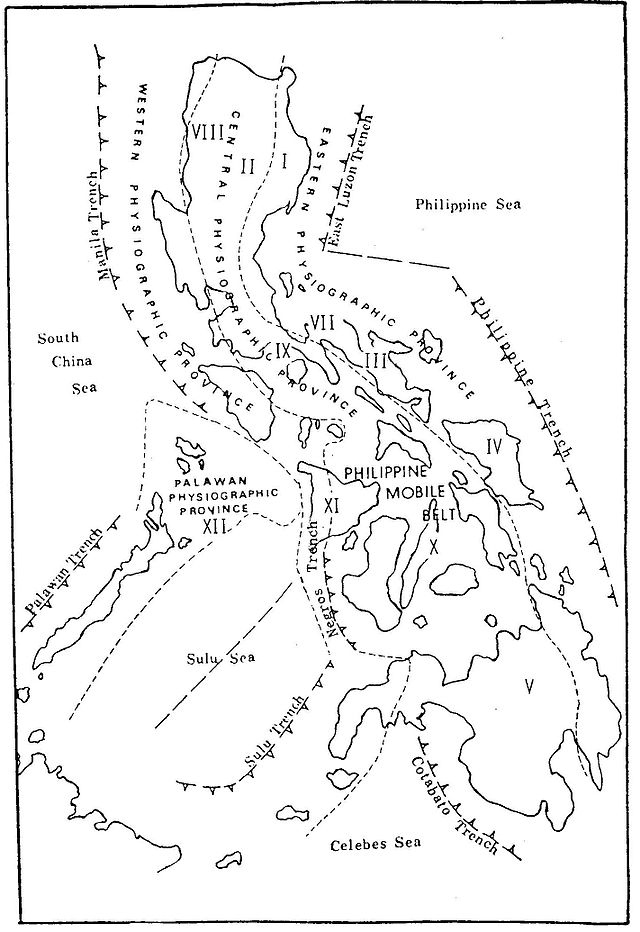Top Qs
Timeline
Chat
Perspective
Philippine Trench
Submarine trench to the east of the Philippines in the Pacific Ocean From Wikipedia, the free encyclopedia
Remove ads
Remove ads
The Philippine Trench (also called the Philippine Deep, Mindanao Trench, and the Mindanao Deep) is a submarine trench to the east of the Philippines. The trench is located in the Philippine sea of the western North Pacific Ocean and continues NNW-SSE.[1] It has a length of approximately 1,320 kilometres (820 miles) and a width of about 30 km (19 mi) from the center of the Philippine island of Luzon trending southeast to the northern Maluku island of Halmahera in Indonesia. At its deepest point, the trench reaches 10,540 meters (34,580 ft or 5,760 fathoms).[2]


Immediately to the north of the Philippine Trench is the East Luzon Trench. They are separated, with their continuity interrupted and displaced, by Benham Plateau on the Philippine Sea Plate.[2]
Remove ads
Geology
Summarize
Perspective
The Philippine trench is hypothesized to be younger than 8–9 million years old. The central part of the Philippine fault formed during the Plio-Pleistocene times[15] is considered to be an active depression of the Earth's crust.[16] The trench formed from a collision between the Palawan and Zamboanga plates. This caused a change in geological processes creating a subduction zone, that is dropping the ocean floor deeper.[15] The rate of subduction on these plates is estimated to be about 15 cm per year.[2] A convergent zone borders an estimate of 45% of the Philippine Trench today.[15]
Although there are vast areas of subduction zones, some authors have considered this region to have low seismic activity,[17] though the USGS has recorded many earthquakes with magnitude ≥ 7.2 in the region as shown by the map to the side. Most recently, in 2012 the Philippine Trench experienced an earthquake of Mw 7.6 (the 2012 Samar earthquake). It hit the trench with a hypocenter depth of 34.9 km.[17] Areas adjacent to the subduction zones have experienced large seismic activity. In 1897, northern Samar experienced a Ms 7.3 earthquake while in 1924 southern Mindanao experienced one with a Ms 8.2.[17]
Remove ads
Depth
The trench reaches one of the greatest depths in the ocean. Its deepest point is known as Emden Deep and reaches 10,540 meters (34,580 ft or 5,760 fathoms).[2]
Sedimentation
Sedimentation of the Philippine trench contains slightly metamorphosed, calc-alkalic, basic, ultrabasic rock and sand grains.[16] The southern area of the trench contains homogeneous blue clay silt and is poor in lime. Sand grains that were also found contained fresh basaltic andesite.[16] The sediments found in the trenches are hypothesized to have been deposited by turbidity currents.[16] A turbidity current is an underwater current that moves rapidly and carries sediment.
Significant quakes
This is a list of significant quakes related to the Philippine Trench, which are 7.0+[18]
Remove ads
Other trenches
Other known trenches in the Philippines are:
References
Wikiwand - on
Seamless Wikipedia browsing. On steroids.
Remove ads

